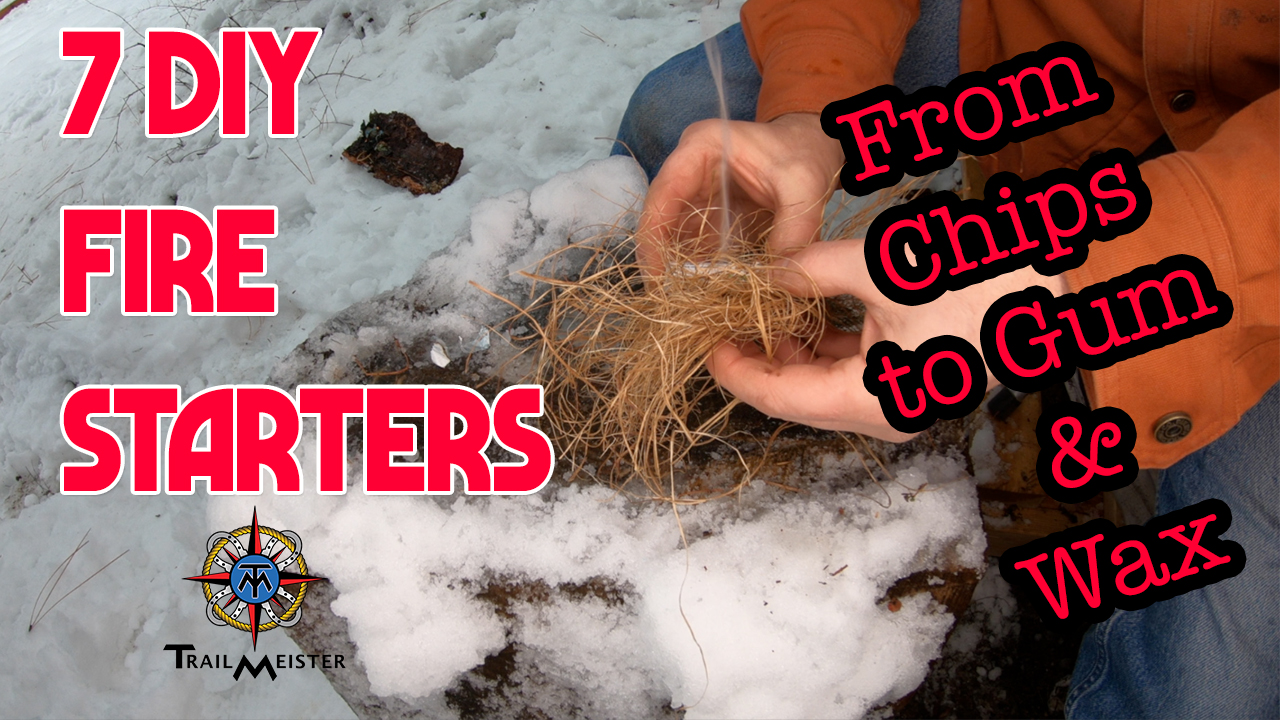DIY FIRE STARTERS
Let’s face it. Campfires are good and proof that God loves us and wants us to be happy.
Nobody has a weak opinion on how to build a fire. You do it the way Grandpa did, or the way your Girl Scout leader did. You’ll never make it differently. So why then can campfires be such a devil to get going?
When it’s been down pouring rain for several days. You’ve got one match left and you’re desperate to get the campfire blazing, having a good fire starter to help get things going can be comforting.
From dryer lint to pine cones, and cotton balls, it’s easy to make your own fire starters. DIY fire starters are one of the few guarantees in life. They’re certain to make your fire starting struggles a thing of the past. Inexpensive and easy to make, they’re all about reducing your fire starting stress.
Here’re some of my favorite DIY Fire Starters:
Dryer Lint & Egg Cartons
The classic DIY fire starter is a wad of dryer lint placed in the empty well of a cardboard egg carton with melted wax poured over top. It’s an easy project and brings back memories of making crafts in grade school. Sawdust, shredded paper or even shredded pieces of egg carton work well as filler.
Cotton Balls & Petroleum Jelly
They’re lightweight and when petroleum jelly is worked into the ball, are highly flammable, if a bit messy. I store mine in old Altoids tins stashed in my saddle bags.
Hand Sanitizer
Squeeze a glob of hand sanitizer on wood and it will burn long enough to dry things out. Make sure the product you are using, however, contains alcohol. Some companies are now making alcohol-free sanitizer and that won’t work.
Waxed Paper & Dyer lint
Waxed paper burns fantastic on its own but you can also wrap-up dryer lint or sawdust in paper, twisting both ends of the paper to hold the contents. It’s a flammable tootsie roll.
Chips
The greasier the better when choosing which snacking chip will burn the best. But trust me, they do burn. Pringles and Fritos are my choices. And once the fire is going, it’s snack time.
Duct Tape
Yes, one more thing you can do with Duct Tape. Use it for a fire starter. It’s highly flammable and burns for a good chunk of time. I wrap pieces of duct tape around my lighter and water bottle so it’s always in hand. Sometimes I’ll even squirt bug repellent or squeeze some hand sanitizer on it as well, just to get things going.
Rubber Bands
It’s probably the most toxic fire starter on the list but it’s really effective. A few rubber bands wrapped around your lighter will get most fires going in short order. Just don’t breathe in the fumes when its ignited.
Cotton Pads in Wax
My favorite fire starter. These are waterproof and don’t take up much space. Simply dip cotton makeup pads in melted wax then set aside to harden and dry. These are mess messy than the cotton ball and Vaseline trick and are much easier to store.
MELTING WAX CAUTION:
You can melt wax without burning the house down or ruining a good cooking pot. Wax is highly flammable so don’t just throw a cube of it in a pot and heat over a stove burner. Slow down the melting rate, and reduce the chance of combustion, by using a double boiler by having the container with the wax in it above another pot of hot water. The simmering water will melt the wax at a slower and safer rate. Melted wax makes a real mess to clean up so you may wish to an old can rather than a cooking pot to melt the wax in.
Bonus Burnable:
Chewing Gum and a Headlamp
Incredibly easy. You McGyver types be a hit around the campfire with this one.
Remove the batteries from the headlamp.
Take the foil backed gum wrapper and tear it into a long strip then cut a “V” shape into it
Connect the metallic side (not the paper) to the battery. Hold both ends of the strip to both the positive and negative charges of the battery. The flame won’t last long, have a good tinder bundle prepared!
I hope you’ve enjoyed our pyrotechnic play today.
As always for more practical information on trail riding and camping with horse and mules, as well as the world’s largest and most comprehensive guide to horse trails and camps, visit us at TrailMeister.com


